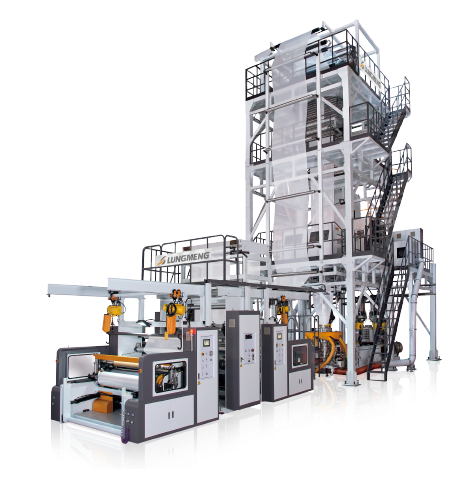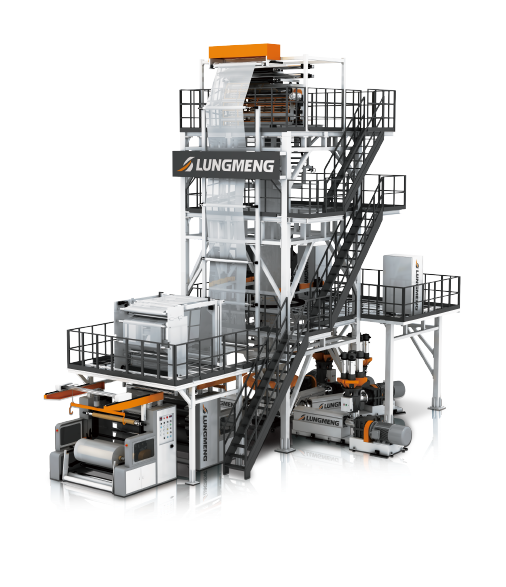Multi-Layer Blown Film Machines: The Ultimate Guide to High-Performance & Sustainable Packaging Films
As global packaging requirements continue to evolve, manufacturers are under increasing pressure to deliver films that combine strength, barrier protection, cost efficiency, and sustainability. Multi-layer blown film machines have emerged as a game-changing solution, enabling producers to create highly engineered films tailored to specific applications.
In this guide, you’ll discover:
✔ What multi-layer blown film machines are and how they work
✔ The differences between 3, 5, 7, and 9-layer configurations
✔ Real-world examples of advanced packaging solutions
✔ Key benefits for your production line
What Are Multi-Layer Blown Film Machines?
Multi-layer blown film machines produce plastic films by co-extruding multiple layers of different polymers into a single, high-performance structure. Each layer serves a unique purpose—enhancing properties such as mechanical strength, transparency, sealability, and barrier resistance.
Typically, the outer layers use premium resins to ensure excellent appearance and sealing performance, while the inner layers can incorporate recycled materials or functional additives to improve sustainability and reduce costs.
This technology is widely used across industries, including:
- Food packaging: for extended shelf life and protection against oxygen and moisture
- Agriculture: for durable mulch and greenhouse films
- Industrial packaging: for heavy-duty sacks, stretch films, and protective wraps
Key Layer Configurations
Three-Layer Machines
-
ABA Configuration:
Two extruders supply the outer layers, while one provides the middle layer. This setup balances cost and performance, making it suitable for products like garbage bags and shopping bags.
Example Application: Cost-effective industrial packaging incorporating recycled core layers.

-
ABC Configuration:
Features three independent extruders, allowing more diverse material selection. This configuration enhances strength and barrier properties, making it ideal for food and medical packaging.
Example Application: Films requiring precise barrier control and enhanced toughness.

Advanced Multi-Layer Systems
For industries requiring superior performance, machines with five, seven, or more layers offer enhanced flexibility in material composition. These systems optimize barrier properties, mechanical strength, and cost efficiency, catering to high-end food packaging and industrial applications.
-
Five-Layer Blown Film Machines :
These allow for greater material variety, combining high-barrier properties and improved film toughness, making them ideal for vacuum packaging and medical applications.
Example Application: Food packaging films with EVOH for oxygen barrier and nylon for puncture resistance.
-
Seven-Layer Blown Film Machines :
Typically used in high-performance applications, such as flexible food packaging and protective films, these machines enable precise layering of advanced polymers.
Example Application: Flexible food packaging that requires extended shelf life and durability.
-
Nine-Layer Blown Film Machines :
At the cutting edge of film production, nine-layer machines provide exceptional customization, allowing for highly engineered films that meet the strictest industry demands, such as pharmaceutical and specialty packaging.
Example Application: High-value specialty films with multiple barrier and sealing layers.

How Multi-Layer Blown Film Machines Work
Here’s how these systems transform raw materials into sophisticated films:
-
Multi-Extruder Feeding System
Each extruder melts a different polymer to form specific layers. Outer layers use high-quality materials, while inner layers may include recycled content or additives.
-
Co-Extrusion Die and Feedblock
Polymers are combined into a single multi-layer structure through a die head, ensuring even distribution and strength.
-
Film Blowing and Inflation
A tubular "bubble" is formed by air inflation, stretching the film to enhance mechanical properties.
-
Cooling and Solidification
Cooling rings and rollers ensure uniform thickness and maintain film properties.
-
Collapsing, Winding, and Finishing
The cooled film is flattened and wound into rolls for further processing like printing and laminating.
Real-World Applications
Case Study : Food Packaging Efficiency
A food company adopted a five-layer film system incorporating EVOH and nylon, enhancing oxygen and moisture barriers. This extended product shelf life, reduced waste, and improved customer satisfaction while maintaining cost efficiency.
Case Study : Sustainable Industrial Packaging
A manufacturer reduced material costs by 20% using an ABA machine, incorporating recycled content in the core while keeping high-quality outer layers. This boosted sustainability and cost-effectiveness.
Advantages of Multi-Layer Blown Film Machines
-
Enhanced Barrier Protection
Protects against oxygen, moisture, and contaminants to maintain product quality.
-
Superior Mechanical Strength
Stretching during film blowing aligns polymer chains for greater toughness.
-
Cost Efficiency & Sustainability
Strategic layering of recycled and virgin materials lowers material costs and supports environmental goals.
-
Customizable Film Structures
Layer composition can be precisely adjusted to match unique application requirements.
-
Consistent High-Quality Output
Automated controls ensure uniform film thickness and reliable production performance.
Frequently Asked Questions
Q: What is the main difference between ABA and ABC configurations?
ABA uses two extruders for the outer layers and one for the core, optimizing costs. ABC has three extruders for full material flexibility, ideal for more demanding applications.
Q: How do multi-layer films contribute to sustainability?
Recycled materials can be incorporated into core layers, reducing virgin resin usage and minimizing waste.
Q: Which industries benefit most from five-layer machines?
Food packaging, medical packaging, and vacuum-sealed products often rely on five-layer films for enhanced protection.
Shaping the Future of Packaging with LungMeng
Multi-layer blown film machines are transforming packaging production by combining strength, sustainability, and efficiency in every roll. Whether you’re producing high-barrier food packaging, industrial films, or specialty protective wraps, investing in advanced blown film technology can help you stay ahead of the competition.
Ready to explore how LungMeng’s multi-layer blown film machines can optimize your packaging operations?
Contact LungMeng today for a free consultation or request a customized proposal tailored to your production goals.



